First, I want to reshape the 2-D to 4-D tensor using tf.reshape().
I thought tf.reshape() will transform
[batch, array] -> [batch, width, height, channels] (NHWC) order
but in practice it transformed
[batch, array] -> [batch, channels, width, height] (NCHW) order
Example:
a = np.array([[1,2,3,4,5,6,7,8,9,10,11,12,13,14,15,16,1,2,3,4,5,6,7,8,9,10,11,12,13,14,15,16,1,2,3,4,5,6,7,8,9,10,11,12,13,14,15,16],[1,2,3,4,5,6,7,8,9,10,11,12,13,14,15,16,1,2,3,4,5,6,7,8,9,10,11,12,13,14,15,16,1,2,3,4,5,6,7,8,9,10,11,12,13,14,15,16]])
print(a.shape)
# [batch_size, channels, height, width]
b = sess.run(tf.reshape(a, shape=[2, 3, 4, 4]))
# [batch_size, height, width, channels]
c = sess.run(tf.reshape(a, shape=[2, 4, 4, 3]))
print(b)
print('*******')
print(c)
The result was:
(2, 48)
[[[[ 1 2 3 4]
[ 5 6 7 8]
[ 9 10 11 12]
[13 14 15 16]]
[[ 1 2 3 4]
[ 5 6 7 8]
[ 9 10 11 12]
[13 14 15 16]]
[[ 1 2 3 4]
[ 5 6 7 8]
[ 9 10 11 12]
[13 14 15 16]]]
[[[ 1 2 3 4]
[ 5 6 7 8]
[ 9 10 11 12]
[13 14 15 16]]
[[ 1 2 3 4]
[ 5 6 7 8]
[ 9 10 11 12]
[13 14 15 16]]
[[ 1 2 3 4]
[ 5 6 7 8]
[ 9 10 11 12]
[13 14 15 16]]]]
*******
[[[[ 1 2 3]
[ 4 5 6]
[ 7 8 9]
[10 11 12]]
[[13 14 15]
[16 1 2]
[ 3 4 5]
[ 6 7 8]]
[[ 9 10 11]
[12 13 14]
[15 16 1]
[ 2 3 4]]
[[ 5 6 7]
[ 8 9 10]
[11 12 13]
[14 15 16]]]
[[[ 1 2 3]
[ 4 5 6]
[ 7 8 9]
[10 11 12]]
[[13 14 15]
[16 1 2]
[ 3 4 5]
[ 6 7 8]]
[[ 9 10 11]
[12 13 14]
[15 16 1]
[ 2 3 4]]
[[ 5 6 7]
[ 8 9 10]
[11 12 13]
[14 15 16]]]]
So, I changed data_format='channels_first' for conv and pooling layers to using the reshaped tensor in NCHW order. In fact, the training was good. --verbose: it gave better result, as mention by @mrry in here, and I think it could be understandable because NCHW is the default order of cuDNN.
However, I can not add image to summary using tf.summary.image(), which is documented here, because the required tensor shape should be in [batch_size, height, width, channels] order.
Moreover, if I train and visualize the input images in [batch, width, height, channels] order, it represented incorrect images.

And I worth to mention that, the training result was not as good as using [batch, channels, width, height] order.
There are several questions:
1. Why tf.reshape() transform [batch , array] -> (NCHW) order instead of (NHWC) order ? I tested with both tf CPU and GPU, same result. I also used np.reshape(), also same result. (This's why I think I could misunderstand something here)
2. How can I visualize images in tensorboard using tf.summary.image() in (NCHW) order? (question #2 solved using advice from @Maosi Chen. Thanks)

I've trained the model on GPU (version 1.4), the images are from CIFAR-10 dataset.
Thanks